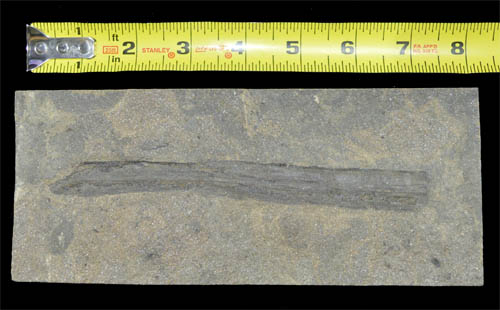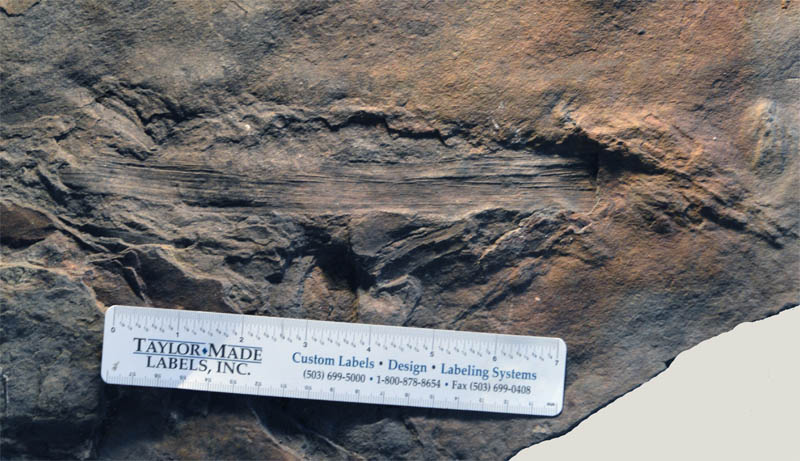Fossil Vegetation in the Quarry
Fossil Dinosaur Tracks and Vegetation Do Not Go Together
In addition to fossil dinosaur footprints, the Nash Quarry has a lot of fossilized vegetation. That is very unusual! And it tells us something about what happened here.

The above photograph shows a fossil from the Nash Quarry that we have in our museum. It's a stick about seven inches long. What's so interesting about a stick?
There are lots of fossils like this in quarry. Around the world fossil dinosaur tracks typically are found on flat bedding plains, with no vegetation. Based on the constraints of evolutionary thinking, the assumption is that the dinosaurs were walking on vast lake shores. The dinosaurs would leave tracks during a rainy season, followed by a dry season that hardened the mud, preserving the tracks. And then the tracks would be buried by annual flood. However, the question arises, where is the vegetation? Plants quickly take root and start growing, but areas with dinosaur tracks have no vegetation... except at the Nash Quarry. Even other dinosaur track sites in the same valley as Nash's do not have vegetation to the extent found at Nash's.
However, the vegetation in the Nash Quarry did not grow there. It is broken pieces of branches and sticks that appear to have floated in from somewhere else. In general there are no leaves. Only a few small root balls, and nothing large. Everything has been broken into small pieces.

The above shows a fossilized stick with a dinosaur track on the right end. This is another fossil we have in our collection. This size and smaller pieces of fossilized wood are common in the quarry.
The Nash Quarry is in a unique location. It is in a rift valley on the lower south-facing slope of an east-west range of pre-flood mountains. There is another mountain range a little over two miles to the west that formed during the global flood. Analysis of the sediment shows the floodwaters came into the valley from the east. As the Biblical flood waters were rising the Nash Quarry would have been protected (for a short time) from the direct impact of the flood, and would have been in a pocket where floating debris would accumulate. That the debris is all broken into smaller pieces is an indication the debris experienced violent conditions that broke it up into small pieces. We can see today that floating debris that collects on river banks and shorelines usually includes logs and large pieces of trees. The evidence we see at the Nash Quarry points to a global flood. Local annual flooding of lakes would not produce the geological and fossil evidence seen here.
Continue the Tour